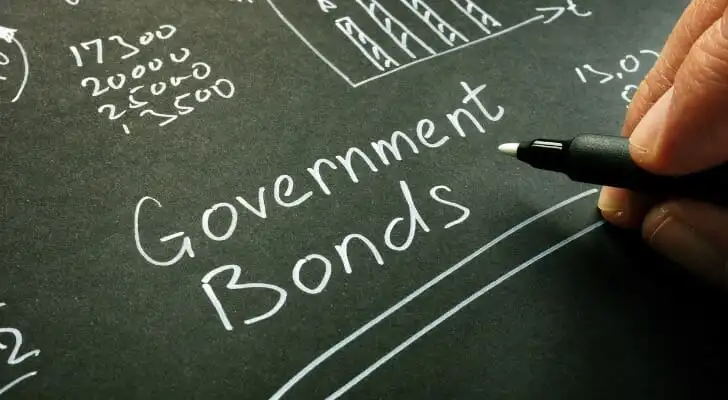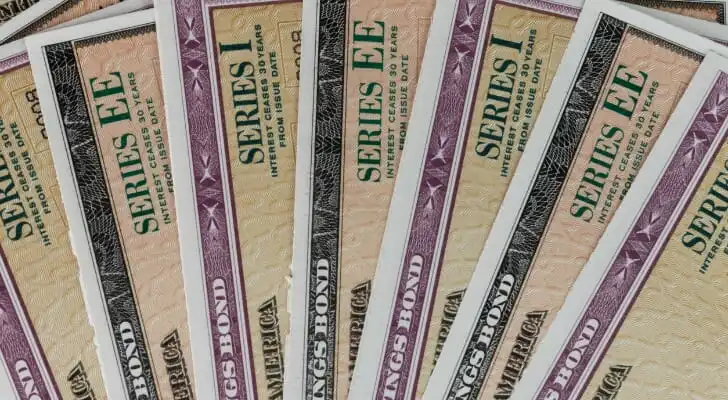Sometimes parents and other relatives discover savings bonds they bought when they were a child but then forgot about, or find bonds that were purchased for their kids many years ago. The good news is that savings bonds gain value over time through their earned interest rates. So forgetting about them may actually be a good thing. However, you may have to take a few steps to redeem the bonds and actually receive the cash. For all of your investing needs, and to understand when to sell your assets to help reach your goals, consider working with a financial advisor.
Determine What Type of Bond You Have
All savings bonds are essentially a contract with the U.S. federal government (despite their connection with government support, the Treasury Department does not make much money from bonds, but still uses them as an instructive tool). If you have a certificate-based bond from your younger years, it is probably either an EE or an I bond. The bond will clearly state which type it is in the title.
EE bonds have a 30-year term, which means they continue to earn interest for 30 years, much like a small, self-contained savings account. The bonds are bought for half their “face value” (anywhere from $50 to $10,000) and gradually mature. However, the interest rate continues for the full 30 years even after the face value is reached, which means that an old bond more than 20 years into its term is probably worth even more than stated. Rates change every six months, so guessing how much an EE bond can be cashed in for is tricky.
I Bonds are much like EE bonds but have a hybrid rate scheme that is more complicated and are bought for their full face value instead of only half. They also last for 30 years but include protection against growing inflation that may provide a boost in interest depending on economic history.
Calculate the Value of the Bond
When you have found out what type of bond you have, go to the Treasury Direct website to calculate the current value of your bond. This handy tool adds up all the interest for you with a few simple inputs. When you have calculated the value, it is time to make a decision: Do you want to cash in the bond now, or let it continue to mature? This will depend on the age of the bond, its current worth and its future potential. You can see the maturity dates of each type of bond below.
Locate an Accredited Financial Institution
Banks and similar financial institutions must have the proper accreditation and technology in order to cash in a savings bond and put the cash in your hand (or transfer it to an account). You can visit the websites of any banks you use to see if they can process bonds, or just give them a call.
A quick stop after work is enough to cash in a savings bond, but be prepared to present identification and the individual who owns the savings bond must be present. So if this is a savings bond that was purchased for your child, you need to bring that individual as well as their identification or you won’t likely be allowed to cash in the bond.
How Long Does a U.S. Savings Bond Take to Mature?
With a U.S. savings bond, the internet accrues monthly and compounds semi-annually. However, you cannot cash in your bond until it hits a certain maturity date and each type of bond has a separate maturity date. According to the U.S. Treasury’s website, here are the maturity timeframes for the two main different types of bonds, based on the issuance date:
- Series EE Bonds: All series EE bonds reach their final maturity 30 years from the date of issuance. The original maturity period of EE bonds if they were issued in May 1995 through April 1997 is 17 years. Series EE bonds that were purchased prior to May 1995 have maturity dates between 5 and 18 years, depending on the issuance date.
- Series I Bonds: Series I bonds all reach final maturity 30 years from the issuance date.
You should also beware of any tax consequences of cashing in a savings bond before doing so.
The Bottom Line
While finding a savings bond isn’t going to help you cash out for retirement, it can be a good boost depending on when it was purchased and how much the original value was. It’s important to do the calculation before you cash it in so that you don’t prematurely cash something in that you would be better off saving for down the line.
Tips for Investing
- Whether you’re holding U.S. savings bonds or stock assets, knowing when to sell them to maximize their value is an important skill that not many investors possess. Consider working with a financial advisor who can help answer your questions, create a potential financial plan for you and even manage your assets. Finding a financial advisor doesn’t have to be hard. SmartAsset’s free calculator matches you with up to three vetted financial advisors who serve your area, and you can interview your advisor matches at no cost to decide which one is right for you. If you’re ready to find an advisor who can help you achieve your financial goals, get started now.
- Consider using SmartAsset’s free investment return calculator to help estimate what your potential return on the assets in your portfolio can provide.
Photo credit: ©iStock.com/designer491, ©iStock.com/jetcityimage, ©iStock.com/Khaosai Wongnatthakan


